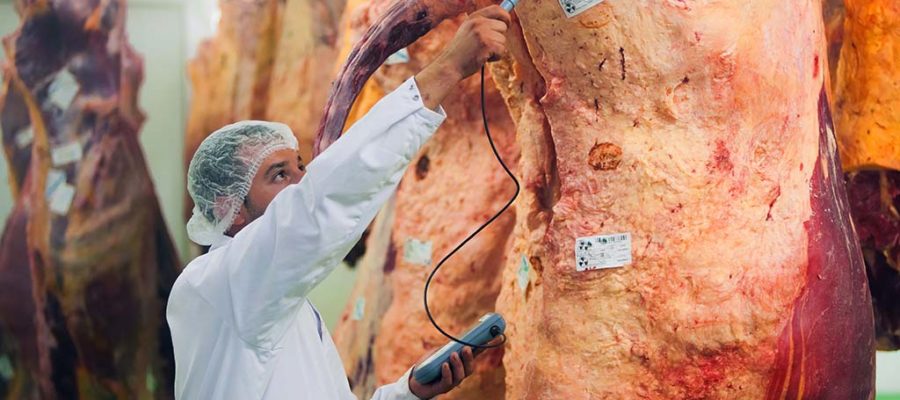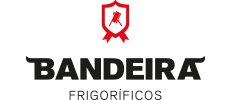
Traceability of beef
Today we are dealing with a topic that is basic to us: the traceability of beef. In Refrigerators Bandeira We invest a lot of time and resources, both human and economic, in our system of traceability management.
What is food traceability?
In accordance with Article 3 of Regulation (EC) 178/2002, ‘ traceability ‘ means the possibility of finding and following the trail, through all stages of production, processing and distribution, of a foodstuff, a feed, an animal intended for the production of food or A substance intended to be incorporated into food or feed or likely to be.
A good traceability system allows us to find the origin of any food safety problem.
Who should ensure traceability?
Food traceability is governed by Regulation (EC) No 178/2002 of the European Parliament and the Council, which lays down the general principles and requirements of food legislation. According to this regulation the traceability must be assured:
- The agents involved in the supply chain: according to this regulation, the traceability of food must ensure, in the first instance, any actor who participates in the supply chain, such as a producer, a slaughterhouse, a carrier…
- Member States of the European Union: there is a part of responsibility in the States, which must monitor the production, processing and distribution of food and feed to ensure that the agents involved in the chain use systems of Traceability that marks the European regulations, in addition to establishing and imposing penalties for those who do not.
- The European Union: the European Union is responsible for legislating on traceability and conducting inspections to ensure that food and feed operators meet safety standards (including traceability systems).
Why is it necessary to establish a traceability system?
Knowing the traceability of food, in particular the food we treat today, beef, allows to rebuild the itinerary that has followed a product directly or indirectly destined to consumption, from its collection, production, elaboration, storage, distribution, etc., so that if any problem arises, it can be detected at what stage it has occurred and cut it from there.
The traceability of food in the labelling
The food label is one of the main tools that allow its traceability. In addition to containing the barcode, which must be governed by international traceability standards, the label must contain the following visible data:
- Lot number and part name
- Carcass weight
- Animal Identification: Eartag reference
- Classification
- Dates of birth and sacrifice
- Country of birth, fattening and slaughtering
- Operator Reference: Name, number of sanitary register
What is the traceability of the meat and what is its objective?
The traceability of beef is a more complex process than the traceability of other foods. This includes from issues that have to do with livestock breeding on farms-and even the previous step, the conception of the animal-and its subsequent slaughter in the slaughterhouse to those that have to do with the subsequent transformation of meat, distribution and sale.
Our goal is to ensure that the meat is kept in good hygienic condition throughout the process and to give the maximum information to generate maximum confidence in the consumer.
The pillars of the traceability of beef are two:
- The system of identification and registration of animals, which is the one that goes from his birth to his sacrifice.
- Obligatory labelling of the origin of the meat, which is the one that goes from its slaughter until the meat product arrives to the consumer.
The traceability of beef in Frigoríficos Bandeira
The verification of the identity of the animal through the coincidence of the Code of the Eartag and the data of the Bovine identification document (DIB) is carried out in our premises, obligatory and under strict official control. If everything is correct, once slaughtered, a reference number is assigned to its meat (channel), together with the sanitary authorization number of the slaughterhouse.
 In Frigoríficos Bandeira We guarantee the traceability of the cattle from the entrance in our facilities until their departure, thus allowing to rebuild the history of the cattle starting from the exploitation of origin to the point of sale. For this we have entries and exit logs in which data are completed as:
In Frigoríficos Bandeira We guarantee the traceability of the cattle from the entrance in our facilities until their departure, thus allowing to rebuild the history of the cattle starting from the exploitation of origin to the point of sale. For this we have entries and exit logs in which data are completed as:
Ticket Registration
At the time of receipt of the animal is checked the animal health documentation, is verified to correspond with the number of eartag of the animal and the following information is recorded:
- N º Eartag.
- Date of entry in blocks.
- Identification of the exploitation of origin of the animal: Stockbreeder/CEA/NIF.
- Birth date.
- Sex.
- Category
- Race.
- Country of birth.
- Country of fattening.
- Enterer/Treater.
Exit log
- Reference number or channel number
- Number of Eartag
- Slaughter Date
- Country of birth of the animal from which the meat comes
- Fattening country of the animal from which the meat comes
- Identification of the exploitation of origin of the animal: Stockbreeder/CEA/NIF.
- Age and sex of the animal from which the canal proceeds.
- Channel departure date, half-carcases, half-channels divided into a maximum of three pieces and channel quarters.
- Carcass weight, half-carcases, half-carcases divided into a maximum of three pieces and channel quarters.
- Target establishment of channels, half-carcases, half-channels divided into a maximum of three pieces and channel quarters.
In Frigoríficos Bandeira We carry out periodic and independent audits to see that we comply with all the legal requirements established and with our rigorous management system to guarantee the quality, traceability and food safety.





